Home – The Conversation |
- New flood maps show US damage rising 26% in next 30 years due to climate change alone, and the inequity is stark
- How Brad Pitt's green housing dream for Hurricane Katrina survivors turned into a nightmare
- What's NATO, and why does Ukraine want to join?
- Can the US find enough natural gas sources to neutralize Russia's energy leverage over Europe?
- There is much more to mindfulness than the popular media hype
- Can delta-8 THC provide some of the benefits of pot – with less paranoia and anxiety?
- Bad managers, burnout and health fears: Why record numbers of hospitality workers are quitting the industry for good
- The IRS already has all your income tax data – so why do Americans still have to file their taxes?
- Why do we bleed? A hematologist explains how the body prevents blood loss after injury
| Posted: 31 Jan 2022 08:00 AM PST 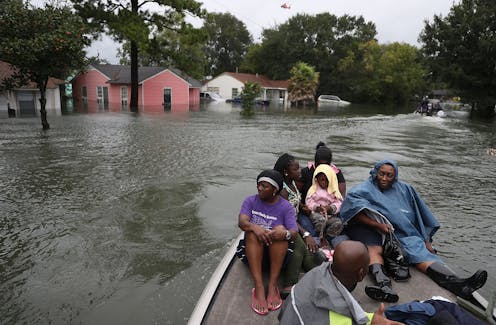 Climate change is raising flood risks in neighborhoods across the U.S. much faster than many people realize. Over the next three decades, the cost of flood damage is on pace to rise 26% due to climate change alone, an analysis of our new flood risk maps shows. That's only part of the risk. Despite recent devastating floods, people are still building in high-risk areas. With population growth factored in, we found the increase in U.S. flood losses will be four times higher than the climate-only effect. Our team develops cutting-edge flood risk maps that incorporate climate change. It's the data that drives local risk estimates you're likely to see on real estate websites. In the new analysis, published Jan. 31, 2022, we estimated where flood risk is rising fastest and who is in harm's way. The results show the high costs of flooding and lay bare the inequities of who has to endure America's crippling flood problem. They also show the importance of altering development patterns now. The role of climate changeFlooding is the most frequent and costliest natural disaster in the United States, and its costs are projected to rise as the climate warms. Decades of measurements, computer models and basic physics all point to increasing precipitation and sea level rise. As the atmosphere warms, it holds about 7% more moisture for every degree Celsius that the temperature rises, meaning more moisture is available to fall as rain, potentially raising the risk of inland flooding. A warmer climate also leads to rising sea levels and higher storm surges as land ice melts and warming ocean water expands. Yet, translating that understanding into the detailed impact of future flooding has been beyond the grasp of existing flood mapping approaches.  Previous efforts to link climate change to flood models offered only a broad view of the threat and didn't zoom in close enough to provide reliable measures of local risk, although they could illustrate the general direction of change. Most local flood maps, such as those produced by the Federal Emergency Management Agency, have a different problem: They're based on historical changes rather than incorporating the risks ahead, and the government is slow to update them. Our maps account for flooding from rivers, rainfall and the oceans – both now and into the future – across the entire contiguous United States. They are produced at scales that show street-by-street impacts, and unlike FEMA maps, they cover floods of many different sizes, from nuisance flooding that may occur every few years to once-in-a-millennium disasters. While hazard maps only show where floods might occur, our new risk analysis combines that with data on the U.S. building stock to understand the damage that occurs when floodwaters collide with homes and businesses. It's the first validated analysis of climate-driven flood risk for the U.S. The inequity of America's flood problemWe estimated that the annual cost of flooding today is over $32 billion nationwide, with an outsized burden on communities in Appalachia, the Gulf Coast and the Northwest. When we looked at demographics, we found that today's flood risk is predominantly concentrated in white, impoverished communities. Many of these are in low-lying areas directly on the coasts or Appalachian valleys at risk from heavy rainfall. But the increase in risk as rising oceans reach farther inland during storms and high tides over the next 30 years falls disproportionately on communities with large African American populations on the Atlantic and Gulf coasts. Urban and rural areas from Texas to Florida to Virginia contain predominantly Black communities projected to see at least a 20% increase in flood risk over the next 30 years. Historically, poorer communities haven't seen as much investment in flood adaptation or infrastructure, leaving them more exposed. The new data, reflecting the cost of damage, contradicts a common misconception that flood risk exacerbated by sea level rise is concentrated in whiter, wealthier areas. 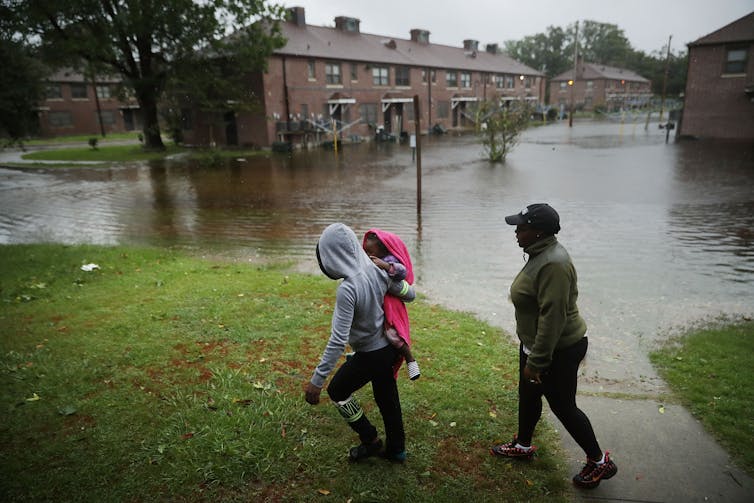 Our findings raise policy questions about disaster recovery. Prior research has found that these groups recover less quickly than more privileged residents and that disasters can further exacerbate existing inequities. Current federal disaster aid disproportionately helps wealthier residents. Without financial safety nets, disasters can be tipping points into financial stress or deeper poverty. Population growth is a major driver of flood riskAnother important contributor to flood risk is the growing population. As urban areas expand, people are building in riskier locations, including expanding into existing floodplains – areas that were already at risk of flooding, even in a stable climate. That's making adapting to the rising climate risks even more difficult. 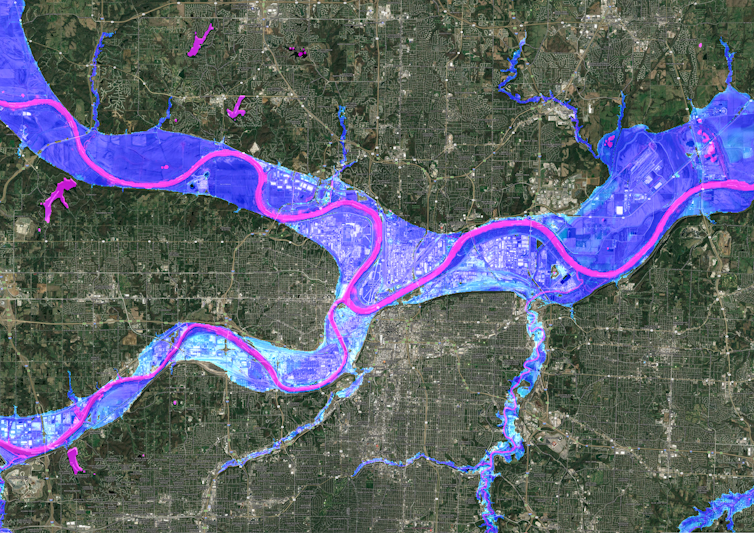 Hurricane Harvey made that risk painfully clear when its record rainfall sent two reservoirs spilling into neighborhoods, inundating homes that had been built in the reservoirs' flood zones. That was in 2017, and communities in Houston are rebuilding in risky areas again. We integrated into our model predictions how and where the increasing numbers of people will live in order to assess their future flood risk. The result: Future development patterns have a four times greater impact on 2050 flood risk than climate change alone. On borrowed timeIf these results seem alarming, consider that these are conservative estimates. We used a middle-of-the-road trajectory for atmospheric greenhouse gas concentrations, one in which global carbon emissions peak in the 2040s and then fall. Importantly, much of this impact over the next three decades is already locked into the climate system. While cutting emissions now is crucial to slow the rate of sea level rise and reduce future flood risk, adaptation is required to protect against the losses we project to 2050. [Over 140,000 readers rely on The Conversation's newsletters to understand the world. Sign up today.] If future development was directed outside of the riskiest areas, and new construction met higher standards for flood mitigation, some of these projected losses could be avoided. In previous research, we found that for a third of currently undeveloped U.S. floodplains it is cheaper to buy the land at today's prices and preserve it for recreation and wildlife than develop it and pay for the inevitable flood damages later. The results stress how critical land use and building codes are when it comes to adapting to climate change and managing future losses from increasing climate extremes. Protecting lives and property will mean moving existing populations out of harm's way and stopping new construction in flood-risk areas. Oliver Wing is a Research Fellow at the University of Bristol and also the Chief Research Officer of Fathom, a flood risk analytics firm. Carolyn Kousky is the Executive Director of the Wharton Risk Center at the University of Pennsylvania. Jeremy Porter is Professor of Quantitative Methods in the Social Sciences at CUNY and also the Chief Research Officer at the research and technology non-profit First Street Foundation. Paul Bates is Professor of Hydrology at the University of Bristol and also a founding shareholder of Fathom. |
| How Brad Pitt's green housing dream for Hurricane Katrina survivors turned into a nightmare Posted: 31 Jan 2022 05:14 AM PST 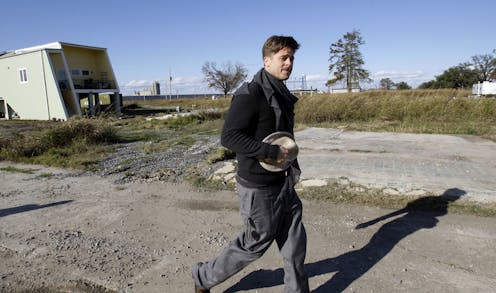 Brad Pitt's Make It Right Foundation built 109 eye-catching and affordable homes in New Orleans for a community where many people were displaced by damage wrought by Hurricane Katrina in 2005. Now this housing development is in disarray. The vast majority of the recently constructed homes are riddled with construction-related problems that have led to mold, termites, rotting wood, flooding and other woes. At least six are boarded up and abandoned. Many residents have filed lawsuits that are still pending. That is, a nonprofit that built houses with input from Frank Gehry and other prominent architects amid much fanfare for survivors of one disaster then ushered in another disaster. Structural and other problems are making many residents fear for their health. Make It Right, despite what its name might suggest, has not resolved these issues and has stopped assisting residents. Instead, the movie star-led nonprofit has apparently become defunct. As an urban geographer who researches on housing development, I've been following Make It Right's travails since 2018, when residents tried to get the New Orleans City Council involved and have municipal authorities inspect the homes. The situation has only deteriorated since then, highlighting the perils that can accompany nonprofit housing development.  Supposedly sustainable housingLocated in New Orleans' historically Black and low-income Lower Ninth Ward, this cluster of affordable homes built between 2008 and 2015 was unusual for several reasons. Notably, these residences were sold, rather than rented to their occupants. The architects who created these homes also tried to make them green and sustainable following a "cradle-to-cradle" philosophy that centers around the use of safe and reusable materials, clean water and renewable energy. All the homes had solar panels and energy-efficient heating and cooling systems. Make It Right reported spending $26.8 million on the housing. To make the homes, which fell short of the group's original goal of 150 residences, affordable, they were sold for less than it cost to build them, mostly around $150,000. The nonprofit housing developer says its mission is to "improve the design and performance of affordable housing" and to "share best practices associated with the construction of such homes." Make It Right also sought to revitalize the Lower Ninth Ward and bring people together. For example, it built a community garden and held regular meetings for the new homeowners.  Although some of these structures are not yet a decade old, my data shows that only six remain in reasonably good shape. Most either have had partial repairs or have been completely renovated because of structural problems. Two were demolished because of severe mold problems.  Many of the houses lacked ordinary, essential features such as rain gutters, overhangs, waterproof painting or covered beams – all of which are necessary to withstand New Orleans' subtropical climate and heavy rainfall. Brad Pitt, who took credit for launching this organization in 2007 and often served as its public face in subsequent years, was still listed as a board member as of 2018. Pitt's lawyers argued that he could not be sued over the housing development's failings, but a judge ruled in 2019 that the movie star would remain a defendant because of his role as Make It Right's founder and chief fundraiser. 'Completely in shambles'I interviewed 11 residents, as well as seven urban planning experts who worked on the case. Additionally, I gathered data on the development and the homes by reviewing New Orleans property assessments and building permits. While staying in the Lower Ninth Ward myself, I personally took a census of the development and mapped its current state. More than one resident told me they were initially very excited to be part of something bigger. A Make It Right resident I'm calling Harry – I promised anonymity to all the residents I interviewed – had to move out of his home during major renovations that didn't resolve all the issues he faces. "They kind of got a second chance to make it wrong, not make it right again," Harry told me. "They made it wrong twice." As of early 2022, six homes are vacant because of mold, rot, flooding and assorted structural issues. Hanna, a young first-time homeowner, walked away from her Make It Right residence, which was later demolished. Only eight months after she moved in, Hanna recounted to me, her home "was completely in shambles." Its flat roof could not hold up in the heavy rains of New Orleans, causing massive water intrusion and subsequent termite infestation and mold. Hanna struggles with health problems caused by toxic mold. "I would like to say that there is always a silver lining, but with this situation, I really don't see a silver lining because it really changed a lot of my plans that I had for myself in life," she said. Most of the residents I interviewed were dealing with a similar state of constant uncertainty. They don't know how much longer their home is going to hold up, whether the mold they were exposed to is affecting their health, and, worst, what would happen to their finances if they were to lose their home. "There is just no turning this off," Harry lamented. "Sometimes I think I'm sitting on a time bomb in this house." Others described always being "on edge," the situation being "very stressful," and a feeling of having been "taken advantage of on the biggest scale." They wonder who they can turn to for help at this point. "Something that's been an incredible disappointment is the lack, the retreat, of Make It Right from any form of responsibility," William told me. A web of legal turmoilWhen Make It Right failed to provide the assistance residents requested, several homeowners filed lawsuits. This litigation is reportedly still pending. Some residents also blame local authorities. "We also have an issue with the city, because those who inspect (the home) and are supposed to keep it safe, did not," said Claire, who tried to get New Orleans' safety and permits department involved.  My many efforts to reach out to Make It Right by mail, email and visits in person remain unsuccessful. When I went to its New Orleans office in December 2021, I encountered no staff. Instead, I witnessed a moving crew that had been hired by the organization to move its furniture and other property into storage. The organization has apparently failed to file a 990 form, annual paperwork the Internal Revenue Service requires of all nonprofits, covering any year since 2018. Local media have reported that a bank is suing it. Its website has become defunct and the phone number it included in its 2018 IRS paperwork no longer works. Even the person who mows the vacant Make It Right properties has told reporters that the nonprofit owes him money. Make It Right, in turn, is suing several former executives and its chief architect for alleged mismanagement. The Conversation U.S. also attempted to reach out to the Make It Right Foundation by phone and email and was unsuccessful. Make It Right has discontinued a similar affordable housing development that was in the works in Kansas City, leaving empty lots there in limbo. The nonprofit had also engaged in projects in Montana, where other legal issues arose, and New Jersey. Who pays in the end?Because one of the abandoned properties is turning into a safety hazard, the city is taking action to seize it. Make It Right's 2018 IRS filings indicate that it was spending more by then on legal services than on construction and maintenance. This mirrors the residents' experiences, who have not seen evidence of the organization's engagement with their community for years. Many are starting to pay for repairs out of their own pockets rather than wait for the nonprofit builder to resolve issues caused by its shoddy construction. "I did most of the work myself," Mario told me. "The ceiling tiles on the porch were falling off, and the wood was rotting, so I just replaced it, slowly, you know, so we could afford it." [Over 140,000 readers rely on The Conversation's newsletters to understand the world. Sign up today.] Despite their experiences, some residents said they still believe Make It Right's founder had good intentions. "I don't blame Brad Pitt," said David, another resident. "He had a vision to build low-income houses and get people back in the Lower Ninth Ward." While nonprofit housing developers can play a vital role in creating affordable housing, many questions remain regarding their accountability in this case and others, in places like Chicago and Washington, D.C.. Mismanaged housing developments, even when constructed with lofty goals, only compound the hardships of the low-income people they purport to serve. Judith Keller receives funding from the German Research Association (DFG). |
| What's NATO, and why does Ukraine want to join? Posted: 31 Jan 2022 05:14 AM PST International concern about Russia's provocative stance toward Ukraine continues, even as Russian President Vladimir Putin denies plans for an attack — and Ukrainian President Volodymyr Zelenskyy cautioned on Jan. 28, 2022, against the idea that "there is war here." Putin has built up more than 100,000 troops along the Ukrainian border, and the U.S. is ready to deploy thousands of troops. The U.S. has also asked the United Kingdom and other NATO allies to deploy hundreds of soldiers to Eastern Europe. Putin says he will stand down if NATO prohibits Ukraine from joining its alliance – a demand that has been rejected. Understanding NATO and its history with Ukraine offers insight into the weight of this ultimatum. 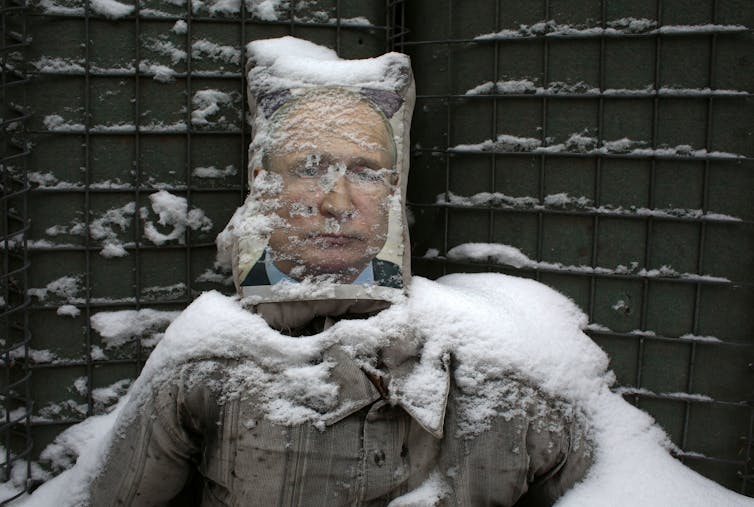 What is NATO, anyway?NATO is a military alliance established in 1949 by the United States, Canada, France, the United Kingdom, and eight other European countries. Additional countries have since joined NATO — most recently North Macedonia in 2020. Thirty nations are now part of the organization. NATO's 4,200 staff members and member country embassies are headquartered on the outskirts of Brussels. The alliance works with the United Nations, and the two are sometimes confused – including in my classroom, where I teach history of the Soviet Union and the Cold War. But NATO does have some things in common with the U.N. Both are international organizations that participating countries financially support. Both are dominated by the political influence of Western powers, including the U.S. NATO's key, traditional principle is "collective defense." This means an attack on one or more members is considered an attack on all members. NATO has invoked the collective defense principle only once: immediately after the attacks on Sept. 11, 2001, when it deployed European military planes to patrol U.S. skies. But NATO has used other political and legal means to justify engagement in the Kosovo War in former Yugoslavia during the 1990s and in the Iraq and Afghanistan wars in the 2000s. The U.S. interprets NATO's military mandate broadly, for example, as the right to use force whenever its members' interests are at stake. NATO has long responded to Russian military threats and served as a bulwark to protect against potential Soviet aggression during the Cold War. Countries could vote by consensus to respond with military force to protect members in the event of any eventual Russian attack on Ukraine. But this military force would not directly protect Ukraine under the collective defense principle, as is not yet a NATO member. Why does Ukraine want to join NATO?Ukraine has had a partnership with NATO since 1992. NATO established a Ukraine-NATO commission in 1997, providing a discussion forum for security concerns and as a way to further the NATO-Ukraine relationship – without a formal membership agreement. Membership with NATO would significantly increase Ukraine's international military backing, allowing for NATO military action within Ukraine and alongside members of its military. This guarantee of military might would act as a firm deterrent to Russian aggression. NATO is clear about the limits of its support to nonmember countries. While it has supported nonmember countries like Afghanistan during humanitarian emergencies, NATO does not commit to deploying troops to a nonmember state. Membership would draw Ukraine more firmly toward Europe, making it more likely that Ukraine could join the European Union — another policy goal for Ukraine. Membership would also help the country build a closer relationship with the U.S. Joining the alliance would also pull Ukraine further away from Russia's sphere of influence. But regional tensions could be exacerbated if Ukraine becomes a NATO member, as Russia has said it would interpret the alliance's expansion as a direct threat.  So, is Ukrainian membership in NATO likely?While Ukraine is making progress toward gaining NATO membership, it is unlikely to join NATO quickly, if at all. All NATO members must unanimously approve a new country, based on factors like a functioning democracy and "unresolved external territorial disputes," so the Russian troops camped on Ukraine's border pose a problem. NATO membership is open to any European country that can "contribute to the security of the North Atlantic area." Aspiring member countries follow a Membership Action Plan, an application process that involves countries detailing their security and political policies. It can take a country 20 years to complete the plan and gain admittance, as in the case of North Macedonia. Former Ukrainian president Leonid Kuchma publicly announced Ukraine's interest in NATO membership in May 2002. Ukraine then applied for a Membership Action Plan in 2008. This process stalled in 2010 under former President Viktor Yanukovich, a Putin-backed politician who did not want to pursue a NATO relationship. Ukraine has more recently re-energized its plans to join NATO, especially in the face of the building Russia-Ukraine conflict and Russia's annexation of Crimea in 2014. In 2017, Ukraine adopted a constitutional amendment that committed itself to NATO membership. Ukraine then adopted a National Security Strategy aimed at developing its NATO partnership in 2021. The NATO application process "has been dragging on for an indecently long time," Ukraine Foreign Minister Dmytro Kuleba said in September 2021. [Over 140,000 readers rely on The Conversation's newsletters to understand the world. Sign up today.] An independent and sovereign Ukraine would support NATO's goal of Euro-Atlantic stability, even if Ukraine has expressed greater urgency than NATO to join the alliance. But Ukraine joining NATO now would, quite simply, be a liability. The threat of an imminent conflict between Ukraine and Russia would commit NATO to take military action against Russia. Alastair Kocho-Williams does not work for, consult, own shares in or receive funding from any company or organization that would benefit from this article, and has disclosed no relevant affiliations beyond their academic appointment. |
| Can the US find enough natural gas sources to neutralize Russia's energy leverage over Europe? Posted: 31 Jan 2022 05:01 AM PST  The prospect of conflict between Russia and NATO countries over Ukraine has raised fears of an energy crisis in Europe. Russia provides nearly half of Europe's natural gas, and some leaders worry that Moscow could tighten the flow if hostilities break out. To weaken Russia's leverage, the Biden administration is working to secure additional gas shipments to Europe from other sources. Global energy policy expert Amy Myers Jaffe explains how much gas is available and what's involved in rerouting it. How dependent is Europe on natural gas, and who are its main suppliers?Natural gas represents about one-fifth of all primary energy used across Europe. It accounts for about 20% of electric power generation and also is used for heating and industrial processes. Russia is the largest supplier of natural gas to Europe, sending about 40% of the continent's supplies shipped by pipeline. The next-largest suppliers via pipeline are Norway (22%), Algeria (18%) and Azerbaijan 9%. Europe also receives natural gas that is liquefied and delivered by ship. In recent months, European imports of liquefied natural gas, or LNG, from the U.S. and elsewhere reached record levels at around 400 million cubic meters per day. To put that in perspective, a single LNG cargo ship can hold roughly 125,000-175,000 cubic meters of natural gas – enough energy to warm 17 million British homes for one winter day. What are the biggest constraints for exporters on sending more gas to Europe?LNG is made by cooling natural gas to minus 260 degrees Fahrenheit (minus 162 degrees Celsius), which reduces its volume by a factor of more than 600. Natural gas is piped to a port, processed in a liquefaction plant and then loaded into specialized insulated, temperature-controlled tankers for shipment by sea. To receive LNG, an offloading port must have a regasification plant that converts the LNG back to a gaseous form so it can be sent by pipeline to end users. Both liquefaction plants and regasification plants cost billions of dollars and take multiple years to build. Following a similar crisis in 2009, when a financial conflict with Ukraine prompted Russia to suspend gas shipments for 20 days, Europe substantially expanded its number of regasification facilities to 29. There is still currently space in European regasification receiving terminals to import more LNG, and plenty of storage space to hold imported supply virtually indefinitely. But many of the world's top suppliers are maxed-out, with little capacity to produce and liquefy more natural gas than they are already moving. The global LNG market has some flexibility. About two-thirds of all LNG is sold under firm, long-term contracts with fixed destinations. Some major contract holders like South Korea, Japan and China and their suppliers are willing to redirect cargoes to Europe if a further cutback in Russian exports creates a worsening supply crisis. Have suppliers rerouted shipments this way before?The main example occurred in 2011 when a tsunami triggered a meltdown and radiation release at Japan's Fukushima Daiichi nuclear plant. Japan shut down all of its nuclear plants to assess whether they were prepared for similar disasters. LNG suppliers diverted gas shipments to Japan to help it weather the immediate crisis. Today, analysts say that producers or LNG importers may be able to redirect cargoes that could offset about 10%-15% of any shortfall. Still, such shifts would likely be at premium prices, leaving European consumers with an even steeper bill than they face now. Will increased U.S. LNG shipments to Europe drive up prices for U.S. consumers?Existing U.S. LNG export facilities have been running at full capacity for several months. About half of U.S. LNG shipments in December 2021 were destined for Europe, spurred by rising prices in European markets. Previously, a larger share of U.S. LNG exports were sailing to China, where drought-related constraints on hydroelectric power had created a surge in demand for natural gas. In other words, U.S. sellers have been able to supply more gas to Europe by diverting export cargoes, rather than by selling gas that would otherwise have been used domestically. In my view, if U.S. natural gas prices rise in the coming weeks, winter weather is likely to be a bigger driver than LNG exports. Wouldn't Russia harm its own economy by cutting off gas exports to Europe and losing those revenues?In recent years, Russia has structured its federal budget in a manner that has allowed it to stash away US$630 billion in foreign exchange reserves – cash held by the central bank in other currencies for discretionary use, much like individual savings accounts. Russian leaders can use these funds to weather any new sanctions or unexpected changes in the price of oil. For example, last year, the Kremlin based its spending on a conservatively low break-even oil price estimate of $45 per barrel, giving itself some latitude. Ultimately, 2021 oil prices averaged $71 a barrel, providing a sizable budgetary windfall. Through this fiscal strategy, Russian President Vladimir Putin has amassed a war chest to withstand any new round of sanctions, or even the complete loss of natural gas export revenues from Europe for a period of time.  Still, any Russian move to cut off gas exports to Europe might have longer-term consequences. Putin may have hoped that his saber-rattling about natural gas, and the high prices it has triggered, would convince Europeans that Russian gas is vital and can't be easily replaced with renewable energy. But ironically, this tactic may already have created a lasting distaste that fast-tracks Europe's pivot to offshore wind, Euro-North African hydrogen hubs and U.S. LNG. Gazprom, the Russian firm with the largest gas export footprint in Europe, might also find itself adrift in a sea of lawsuits and high penalty charges for breaking its contractual commitments in the wake of a cutoff. That in turn could affect the Russian people, who also rely on Gazprom's solvency for their winter fuel for heating. [Over 140,000 readers rely on The Conversation's newsletters to understand the world. Sign up today.] Putin may be willing to bet that an energy pricing crisis in Europe will sow popular discontent, scotch the energy transition and help Russia win concessions on NATO's positioning of troops and missiles. But there is little evidence that Europe will react that way. While Europe's shift to renewables will take time, it will still be bad news in the long run for Russia, which has 1,688 trillion cubic feet of natural gas reserves left to be exploited for as much as 100 years of supply. Amy Myers Jaffe does not work for, consult, own shares in or receive funding from any company or organisation that would benefit from this article, and has disclosed no relevant affiliations beyond their academic appointment. |
| There is much more to mindfulness than the popular media hype Posted: 31 Jan 2022 05:01 AM PST  Mindfulness is seemingly everywhere these days. A Google search I conducted in January 2022 for the term "mindfulness" resulted in almost 3 billion hits. The practice is now routinely offered in workplaces, schools, psychologists' offices and hospitals all across the country. Most of the public enthusiasm for mindfulness stems from the reputation it has for reducing stress. But scholars and researchers who work on mindfulness, and the Buddhist tradition itself, paint a more complex picture than does the popular media. Medicalizing meditationMindfulness originated in the Buddhist practice of "anapana-sati," a Sanskrit phrase that means "awareness of breath." Buddhist historian Erik Braun has traced the origins of the contemporary popularity of meditation to colonial Burma – modern-day Myanmar – in the late 19th and early 20th centuries. Meditation, which was practiced almost exclusively inside monasteries until then, was introduced to the general public in a simplified format that was easier to learn. The gradual spread of meditation from that time to the present is a surprisingly complex story. In the U.S., meditation first started to be practiced among diverse communities of spiritual seekers as early as the 19th century. It was adopted by professional psychotherapists in the early 20th century. By the 21st century, it had become a mass-marketing phenomenon promoted by celebrities such as Oprah Winfrey, Deepak Chopra and Gwyneth Paltrow. The process of translating the Buddhist practice of meditation across cultural divides transformed the practice in significant ways. Modern meditation often has different goals and priorities than traditional Buddhist meditation. It tends to focus on stress reduction, mental health or concrete benefits in daily life instead of spiritual development, liberation or enlightenment. A pivotal moment in this transformation was the creation of the Mindfulness-Based Stress Reduction (MBSR) protocol by Jon Kabat-Zinn, a professor of medicine at the University of Massachusetts Medical School, in 1979. The stress reduction program introduced a standardized way of teaching meditation to patients so that its health benefits could be more rigorously measured by scientists. Research on this new kind of "medicalized" mindfulness began to gather steam in the past two decades. As of today there are over 21,000 research articles on mindfulness in the National Library of Medicine's online database — two and a half times as many articles as have been published on yoga, tai chi and reiki combined. Scientific evidence vs. mindfulness hypeMedical researchers themselves have had a far more measured opinion about the benefits of meditation than the popular press. For example, a 2019 meta-analysis, which is a review of many individual scientific studies, pointed out that the evidence for the benefits of mindfulness and other meditation-based interventions has "significant limitations" and that the research has "methodological shortcomings." Based on their review of the scientific literature, the authors warned against falling prey to "mindfulness hype." On the positive side, they found various forms of meditation to be more or less comparable to the conventional therapies currently used to treat depression, anxiety, chronic pain and substance use. On the other hand, they concluded that more evidence is needed before any strong claims can be made regarding treatment of conditions such as attention disorders, PTSD, dysregulated eating or serious mental illnesses. More troubling, some researchers are even beginning to suggest that a certain percentage of patients may experience negative side effects from the practice of meditation, including increased anxiety, depression or, in extreme cases, even psychosis. While the causes of these side effects are not yet fully understood, it is evident that for some patients, therapeutic meditation is far from the panacea it is often made out to be. Putting mindfulness back into contextAs a historian of the relationship between Buddhism and medicine, I argue that mindfulness can be a beneficial practice for many people, but that we should understand the broader context in which it developed and has been practiced for centuries. Mindfulness is one small part of a diverse range of healing techniques and perspectives the Buddhist tradition has developed and maintained over many centuries.  In a recent book, I have traced the global history of the many ways that the religion has contributed to the development of medicine over the past 2,400 years or so. Buddhist tradition advocates countless contemplations, devotional practices, herbal remedies, dietary advice and ways of synchronizing the human body with the environment and the seasons, all of which are related to healing. These ideas and practices are enormously influential around the world as well as in Buddhist communities in the U.S. Such interventions have been particularly visible during the COVID-19 pandemic – for example, through the medical charity of major international Buddhist organizations as well as through health advice given by high-profile monastics such as the Dalai Lama. Buddhism has always had a lot to say about health. But perhaps the most significant of its many contributions is its teaching that our physical and mental well-being are intricately intertwined – not only with each other, but also with the health and vitality of all living beings. Medicalized meditation is now a self-help commodity that generates over US$1 billion per year, leading some critics to label it "McMindfulness." But placing mindfulness back into a Buddhist ethical context shows that it is not enough to simply meditate to reduce our own stress or to more effectively navigate the challenges of the modern world. As I argue in my most recent book, Buddhist ethics asks us to look up from our meditation cushions and to look out beyond our individual selves. It asks us to appreciate how everything is interconnected and how our actions and choices influence our lives, our society and the environment. The emphasis, even while healing ourselves, is always on becoming agents of compassion, healing and well-being for the whole. [This Week in Religion, a global roundup each Thursday. Sign up.] Pierce Salguero does not work for, consult, own shares in or receive funding from any company or organization that would benefit from this article, and has disclosed no relevant affiliations beyond their academic appointment. |
| Can delta-8 THC provide some of the benefits of pot – with less paranoia and anxiety? Posted: 31 Jan 2022 05:01 AM PST  Over the past year, you may have seen something called delta-8 THC or "delta 8" appear in convenience stores and pharmacies alongside CBD gummies, oils and lotions. Delta-8 THC is a hemp-derived compound that's closely related to delta-9 THC – what's commonly called THC and is the psychoactive component of cannabis that's responsible for the high that users feel. Like garden variety marijuana, delta-8 THC can be vaped or eaten. However, it's rarely smoked. Anecdotally, its fans swear by its benefits – that it helps with relaxation and pain relief without intense highs that can veer into anxiety or paranoia. Yet there's been a dearth of research on this compound. As public health scholars, we decided to conduct the first survey of delta-8 THC users to find out who was using it, why they were using it and what sort of effects it had. The latest cannabinoid to storm the marketThe 2018 Agriculture Improvement Act – also known as the farm bill – legalized the sale of hemp-derived compounds. The widely available CBD is a hemp-derived compound. Delta-8 THC is another. It's an isomer, or chemical analog, of THC. The difference is in the position of a double bond in the carbon ring, which makes delta-8 THC have a lower affinity for the CB1 receptor of the endocannabinoid system in our brains. For this reason, it may be less potent than THC and cause a less-intense high.  Natural concentrations of delta-8 THC in cannabis are too low for it to be effectively smoked in raw bud or flower. It needs to be extracted from large amounts of plant material, transformed from another cannabinoid like CBD, or synthesized chemically. The Drug Enforcement Administration considers artificially synthesized delta-8 THC illegal. Nonetheless, delta-8 THC products have become one of the fastest-growing sectors of the hemp industry. They seem to be especially popular in areas where THC products remain illegal or medical access is very difficult. There is little research on this component of cannabis. One study from 1973 found that the effects of delta-8 THC mimicked those of THC, but weren't as intense. Another, published in 1995, suggested that delta-8 THC could be used as a therapeutic treatment for the adverse effects of chemotherapy. These studies, however, enrolled only a dozen individuals, and few policymakers seem to even be aware of their existence. While delta-8 THC can be bought in convenience stores and hemp shops in many states, over a dozen U.S. states have blocked the sale of delta-8 THC products due to a lack of research on its psychoactive effects and concerns over contamination with heavy metals and other toxic substances. Clearing the smoke with scienceIn our study, we collected data via an online survey that was completed by more than 500 participants across 38 states. Most of our participants consumed delta-8 THC through concentrates that were either eaten as edibles and tinctures or smoked by vaping – methods of ingestion that may be safer than smoking. About half said they used delta-8 THC to treat a health or medical condition, and almost one-third of participants said they exclusively used delta-8 THC to treat a health condition – they didn't use it just for fun. Common conditions treated were anxiety or panic attacks, chronic pain, depression or bipolar disorder, and stress – afflictions that people also treat with delta-9 THC. As we expected, participants thought that delta-8 THC had effects that were somewhat less intense compared with THC. What's remarkable, though, is how the profiles of their experiences differ. Compared with THC, delta-8 THC appears to provide similar levels of relaxation and pain relief. While it seems to cause slightly lower levels of euphoria, it also seems to produce fewer cognitive distortions such as an altered sense of time, short-term memory issues and difficulty concentrating. Participants were also much less likely to experience distressing mental states such as anxiety and paranoia. Many participants remarked how they could use delta-8 THC and still be productive, whereas they tended to use THC products recreationally, given its more potent, mind-altering effects. Most participants reduced or stopped using pharmaceutical drugs, as well as THC products, because they were using delta-8 THC to treat their conditions. They considered delta-8 THC better than pharmaceutical drugs in terms of adverse side effects, addictiveness, withdrawal symptoms, effectiveness, safety, availability and cost. [Get the best of The Conversation, every weekend. Sign up for our weekly newsletter.] However, participants weren't confident that their primary care doctor could integrate medical cannabis into their course of treatment. For this reason, many hadn't disclosed their use of delta-8 THC as a substitute for pharmaceutical drugs to their doctors. These patterns demonstrate the need for more research and better education for health care providers on cannabis and its derivatives; there continues to be a disconnect between those who use cannabis to self-medicate and the mainstream health care system. More to be doneOur findings are just the start. We hope that they'll spur more sophisticated research, such as double-blind randomized controlled trials that explore its treatment potential for specific conditions. And we still don't know if some of the effects reported by our participants, both beneficial and harmful, were due to contaminants or expectations – a placebo effect. Yet even though delta-8 THC products may provide much of the experiential and therapeutic benefits, with lower risks and fewer adverse effects, some states have outright banned delta-8 THC sales. Since many of those same states permit the recreational sale of cannabis and other hemp products, this seems a bit paradoxical. Criminalizing substances with high consumer demand like delta-8 THC can create a black market and produce even more concerns for consumer safety, as there's no mechanism for the regulation and protection of consumers. Cannabis laws remain a patchwork of policies and regulations. With more and more Americans having access to cannabis for medicinal and recreational purposes, we believe it behooves policymakers to advocate for further study of this promising alternative. The authors do not work for, consult, own shares in or receive funding from any company or organization that would benefit from this article, and have disclosed no relevant affiliations beyond their academic appointment. |
| Posted: 31 Jan 2022 05:00 AM PST 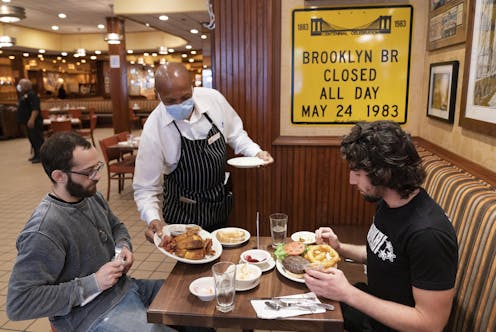 About 3.5 million people have at least temporarily left the U.S. workforce since March 2020. Over one-third of them – 1.2 million – are in the leisure and hospitality industry. This has created huge problems for restaurants, hotels and other leisure and hospitality businesses that have struggled to find workers for record numbers of job openings in 2021. A big part of this decline seems to be explained by the "great resignation." Leisure and hospitality workers are quitting at the highest rates of any industry. About 1 million quit in November 2021 alone. And the data suggests many of them are not simply swapping one hospitality job for another but leaving the industry entirely. Why are these workers quitting, where are they going and what can be done to bring them back? We recently commissioned a survey aimed at tracking down some of these workers and answering these questions. The research is ongoing, but our early qualitative results offer some clues to answering these questions. Reasons for attritionBefore we get to our early data, there are several characteristics of leisure and hospitality work that help explain why the industry has unusually high turnover rates. For one thing, the wages are very low. Leisure and hospitality workers were earning an average of $515 a week – including tips – as of December 2021, making them the worst-paid of all sectors, according to Bureau of Labor Statistics data. That's less than half of the average for all private workers and translates into annual income of under $27,000 – based on 52 weeks of pay. This puts financial stress on these employees, often forcing them to work multiple jobs to get by. The working hours are also challenging, often involving nights, weekends and holidays, which means hospitality workers routinely miss out on time with friends and family, limiting opportunities to recharge their emotional batteries. Moreover, the nature of the jobs in this sector are particularly stressful and emotionally draining. In fact, sociologists and economists have a phrase for this: emotional labor. This concept refers to the suppression of whatever emotions an employee may be experiencing to provide good service to a customer – and often "with a smile." In hospitality, employees must regulate the outward expression of their emotions to the benefit of the customer and their employer, regardless of what they are feeling. Sometimes this puts little or no burden on the employee, but at other times it takes a great emotional toll. The COVID-19 pandemic has amped up the emotional labor of service work considerably. The new stressors include massive furloughs and layoffs since March 2020, significant risks to personal health by having little choice but to work at a physical location where workers regularly are in close proximity to colleagues and customers, as well as fights with patrons over enforcing mask bans and vaccine mandates. The news media regularly report on angry and even violent confrontations between customers and service workers, whether on planes, in restaurants or in other types of establishments. 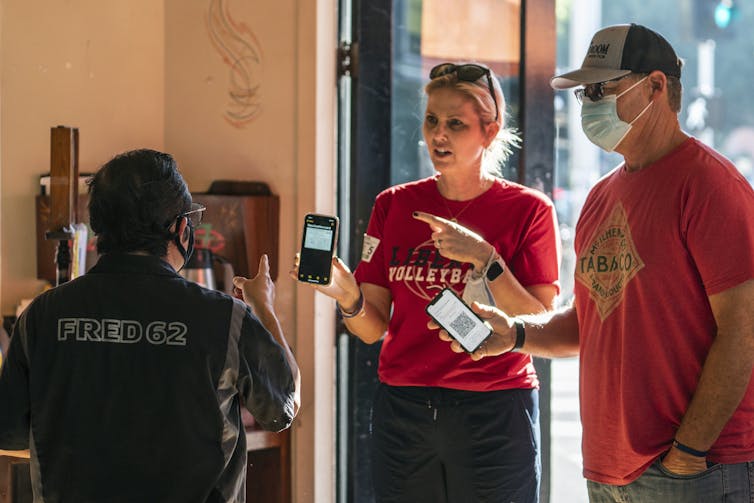 Finding the 'quitters'While there's been a ton of coverage of the sector's record quit rate of 6.4% in November – the latest data available – there's less hard data on why hospitality workers are leaving their jobs now and where they are going. So as part of an ongoing project studying employee attrition, we asked Qualtrics – an employee and customer experience data-gathering company – to find people who worked in the hospitality sector before and during the COVID-19 pandemic and have since left the industry – a process that was exceedingly difficult. We completed a qualitative unpublished pilot study in December 2021 to help inform a larger quantitative survey we're working on right now. Our initial results, which include open-ended responses from 31 people, aren't necessarily representative of all or even most workers who have quit their jobs but allow us to paint a more complete picture of what's driving the decisions of these specific individuals. We asked them why they left, where they went and what could lure them back to a hospitality job. We used their answers to construct questions that are appropriate for in-depth statistical analysis, which will then be administered to 350 people who agree to take part in the quantitative survey. Results of that survey will be available in a couple months. Why people are leavingOur first question focused on what drove people to not only quit their jobs but leave the hospitality sector. The most common responses related to health and safety concerns, burnout and issues involving managers or co-workers. One of our respondents was a 35-year-old single mother who said she had been working in the food service industry for about five years before the pandemic hit. She quit her job four months later. "My safety and my family's safety were on the line and I was being overworked," she said. A 20-year-old man said he left the hotel industry during the pandemic after five years "because I truly wasn't happy" and "didn't have the will to keep going on." Another 35-year-old woman said she quit her job on a cruise ship because she cares for her elderly parents, who would be more at risk were they exposed to COVID-19. "They didn't care about our well-being," she said. "I have family at home that can die if exposed to COVID." Where did they goAs for what the people in our survey decided to do after leaving the industry, the most common answer was to get more education. But others emphasized a desire to go into business for themselves or to a different type of service job, such as in retail. A 21-year-old man who had been working at nightclubs for over three years said he quit to go to college. Both the 35-year-old single mother and 20-year-old man said they decided to become self-employed. Another 23-year-old single mother who had worked in food service before and during the pandemic left for retail, stating: "I got another job as a cashier and it was the only thing I could find at that moment." Would they go backMost of our participants told us nothing would bring them back to these types of jobs – they were done with the industry. The 35-year-old single mother, for example, said there was nothing that could be done to bring her back now that she had moved on with her own business. But others said better money or hours would help lure them back, as well as stronger managerial support. [Over 140,000 readers rely on The Conversation's newsletters to understand the world. Sign up today.] A 42-year-old woman who spent nearly a decade in the food service industry said she would return for "better pay and more respect," a sentiment echoed by others. An 18-year-old woman said she quit a food service job because of a manager with a "really bad temper" who would "cuss at customers and employees." She said that the only way she would go back to hospitality work is if a company showed her "that managers are actually there to help employees." "I would also like customers to be more patient and humble," she added. The authors do not work for, consult, own shares in or receive funding from any company or organisation that would benefit from this article, and have disclosed no relevant affiliations beyond their academic appointment. |
| The IRS already has all your income tax data – so why do Americans still have to file their taxes? Posted: 31 Jan 2022 05:00 AM PST  Doing taxes in the U.S. is notoriously complicated and costly. And it gets even worse when there are delays and backlogs, making it especially hard to reach the Internal Revenue Service for assistance. But to me this raises an important question: Why should taxpayers have to navigate the tedious, costly tax filing system at all? The case for a 'simple return'In 1985, President Ronald Reagan promised a "return-free" tax system in which half of all Americans would never fill out a tax return again. Under the framework, taxpayers with simple returns would automatically receive a refund or a letter detailing any tax owed. Taxpayers with more complicated returns would use the system in place today. In 2006, President Barack Obama's chief economist, Austan Goolsbee, suggested a "simple return," in which taxpayers would receive already completed tax forms for their review or correction. Goolsbee estimated his system would save taxpayers more than US$2 billion a year in tax preparation fees. Though never implemented, the two proposals illustrate what we all know: No one enjoys filling out tax forms. So why do we have to? As an expert on the U.S. tax system, I see America's costly and time-consuming tax reporting system as a consequence of its relationship with the commercial tax preparation industry, which lobbies Congress to maintain the status quo. A costly and time-consuming systemReturn-free filing is not difficult. At least 30 countries permit return-free filing, including Denmark, Sweden, Spain and the United Kingdom. Furthermore, 95% of American taxpayers receive at least one of more than 30 types of information returns that let the government know their exact income. These information returns give the government everything it needs to fill out most taxpayers' returns. The U.S. system is 10 times more expensive than tax systems in 36 other countries with robust economies. But those costs vanish in a return-free system, as would the 2.6 billion hours Americans spend on tax preparation each year. Maybe you're wondering whether Congress is just behind the times, unaware that it can release us from tax preparation? Not true. Commercial tax preparationAbout two decades ago, Congress directed the IRS to provide low-income taxpayers with free tax preparation. The agency responded in 2002 with "Free File," a public-private partnership between the government and the tax-preparation industry. As part of the deal, the IRS agreed not to compete with the private sector in the free tax preparation market. In 2007, the House of Representatives rejected legislation to provide free government tax preparation for all taxpayers. And in 2019, Congress tried to legally bar the IRS from ever providing free online tax preparation services. Only a public outcry turned the tide. The public part of Free File consists of the IRS herding taxpayers to commercial tax -preparation websites. The private part consists of those commercial entities diverting taxpayers toward costly alternatives. According to the Treasury Inspector General for Tax Administration, which oversees IRS activities, private partners use computer code to hide the free websites and take unsuspecting taxpayers to paid sites. Should a taxpayer discover a free preparation alternative, the private preparers impose various restrictions such as income or the use of various forms as an excuse to kick taxpayers back to paid preparation. Consequently, of the more than 100 million taxpayers eligible for free help, 35% end up paying for tax preparation and 60% never even visit the free websites. Instead of 70% of Americans receiving free tax preparation, commercial companies whittled that percentage down to 3%. Tax savings and evasionPerhaps you are guessing that there are valid policy justifications for avoiding government and empowering the private sector. Judge those arguments yourself. One argument from commercial tax preparers is that taxpayers will miss out on valuable tax savings if they rely on free government preparation. In fact, the government software would reflect the same laws used by the paid preparers with the same access to tax saving deductions or credits. Further, tax preparers like H&R Block promise to pay all taxes and interest resulting from a failed audit. As a result, these services have every incentive to take conservative, pro-government tax positions. A second argument is that government-prepared tax returns encourage tax evasion. In a no-return system, the government reveals its knowledge of the taxpayer's income before the taxpayer files. Thus, the argument goes, the taxpayer knows if the government has missed something and has reason to let the mistake stand. But taxpayers already know what information forms the government has because they receive duplicates of those forms. The incentive to lie does not increase because the taxpayer avoids weeks of tax preparation. Bolstering the anti-taxersFinally, there is the anti-tax argument for onerous tax preparation: Keep tax preparation unpleasant to fuel anti-tax sentiment. In the past, Republicans argued against high taxes. But after decades of tax cuts, Americans are no longer swayed by that argument. Exasperating tax preparation, according to this argument, helps keep the anti-tax fever high. And that fuels public hate for government and the tax system. Unfortunately, the anti-tax contingent's desire to force Americans to spend time and money on tax preparation dovetails with the tax preparation industry's desire to collect billions of dollars in fees. Tax preparation companies lobby Congress to keep tax preparation costly and complicated. Indeed, Intuit, maker of TurboTax, the tax preparation software, has listed government tax preparation as a threat to its business model. One example is the earned income tax credit, a government program for low-income people. The credit is so complicated that 20% of the people who are eligible never file, thus missing out on thousands of dollars in savings. If the government prepared everyone's tax returns, that 20% would receive government support. Nonetheless, Intuit has lobbied lawmakers to make the credit more complicated, thereby driving more taxpayers to paid preparation services. In other words, it seems the tax preparation industry has kept the system complicated because the potential cost to it in terms of lost revenue is vast. I believe only public outcry can change the system. Beverly Moran does not work for, consult, own shares in or receive funding from any company or organization that would benefit from this article, and has disclosed no relevant affiliations beyond their academic appointment. |
| Why do we bleed? A hematologist explains how the body prevents blood loss after injury Posted: 31 Jan 2022 05:00 AM PST 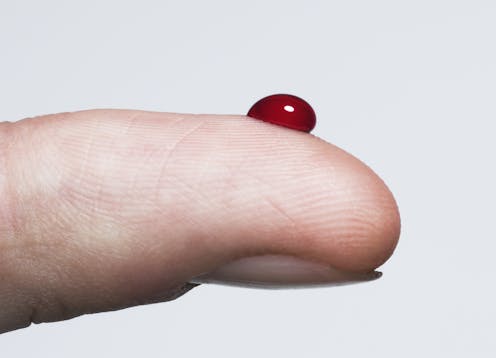  Curious Kids is a series for children of all ages. If you have a question you'd like an expert to answer, send it to curiouskidsus@theconversation.com.
"Ouch!" I cried out, looking down at where my family's puppy, Hercules, had just bitten me. Two tiny dots of red started to bloom where he had sunk his canine teeth into my finger. "Bad dog," I said to him. He looked up at me sheepishly. "Well, I guess I'm a bad human for putting my finger near your mouth," I admitted. He wagged his tail and licked my arm. I put pressure on my finger until the bleeding stopped. Three weeks later the area had healed, and we had taught Hercules to heel, too! I am a doctor who specializes in hematology – the study of blood. Here, I'll share with you how blood travels through the body, how we bleed and, more importantly, how we stop bleeding. What's inside blood?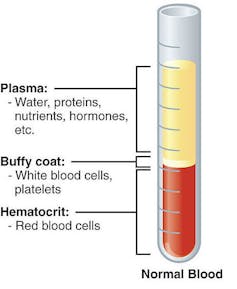 The blood in our bodies is a complex fluid. It contains red blood cells, which bring oxygen to our body's tissues; white blood cells, our body's infection-fighting army; and platelets, which clump together to help stop bleeding. A special protein called hemoglobin in red blood cells is what gives our blood its beautiful red color. The yellowy, liquid portion of blood is called plasma. Most of it – over 90% of it – is water, but the remaining portion contains molecules that help our blood clot and stop bleeding. Where does blood live and where does it travel?The bone marrow, located in the center of our bones, is the factory that makes the cells circulating in our bloodstream. Once blood cells are made, they move into blood vessels – rubbery tubes that form roads traveling through our entire body. Veins are the vessels that carry blood to the heart, while arteries carry blood to the rest of the body. The biggest vessels can be the width of a garden hose, while the smallest can be tinier than a human hair. Blood travels 12,000 miles through the vessels of an adult every single day! The heart is the powerful engine that pushes blood through those tubes to deliver oxygen and nutrients to our organs and skin. First, the right side of the heart pumps the blood into the lungs, which contains oxygen from the air we breathe. Here, the hemoglobin in red blood cells grabs oxygen and take it back to the heart. The left side of the heart then pumps that oxygen-rich blood to the rest of the body. After red blood cells drop off their oxygen cargo, they are pumped back to the right side of the heart to get more oxygen and repeat their tour of the body again. 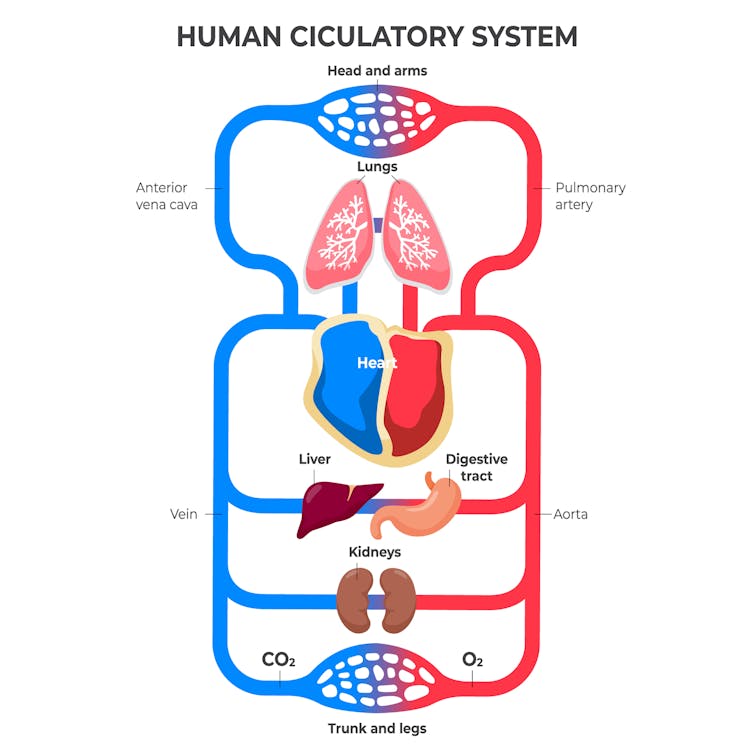 Why do we bleed?The skin forms a protective layer over our bodies. When that layer is damaged, the blood vessels immediately underneath it are torn, allowing blood to leak out. A small cut tears just the small vessels near the skin, and only a tiny amount of blood drips out. A deep cut might tear larger vessels and cause more bleeding. When we bang an arm or a leg, tearing the smaller vessels without damaging our skin, blood collects under the unbroken skin to form a bruise. Because the heart is still pumping blood throughout the body, more blood will continue to leak out until the damage is patched up. To stop the leaking, a torn blood vessel releases chemicals that activate proteins that clump together and form a plug to fill the hole. This seals up the blood vessel and prevents more blood from getting out. You've seen the results of this on your skin before: the scab that forms on top of a scrape or cut.  Applying pressure to a wound helps stop bleeding because it pushes the walls of the vessel together to slow the flow of blood. This helps form a clot to plug the tear, starting the healing process. Hello, curious kids! Do you have a question you'd like an expert to answer? Ask an adult to send your question to CuriousKidsUS@theconversation.com. Please tell us your name, age and the city where you live. And since curiosity has no age limit – adults, let us know what you're wondering, too. We won't be able to answer every question, but we will do our best. Mikkael A. Sekeres does not work for, consult, own shares in or receive funding from any company or organisation that would benefit from this article, and has disclosed no relevant affiliations beyond their academic appointment. |
| You are subscribed to email updates from Home – The Conversation. To stop receiving these emails, you may unsubscribe now. | Email delivery powered by Google |
| Google, 1600 Amphitheatre Parkway, Mountain View, CA 94043, United States | |

No comments:
Post a Comment